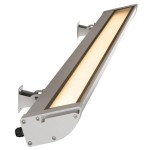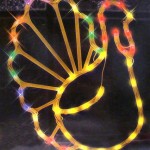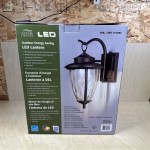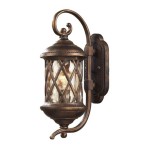How Do I Reset My Outdoor Light Timer?
Outdoor light timers are valuable tools for automating exterior lighting, enhancing home security, and contributing to energy efficiency. These devices can be programmed to turn lights on and off at specific times, simulating occupancy when residents are away, and ensuring pathways and entryways are well-lit during evening hours. However, like any electronic device, outdoor light timers may occasionally require resetting due to power outages, daylight saving time adjustments, or programming errors. Understanding the different types of outdoor light timers and the appropriate reset procedures ensures the continued proper functioning of this important home automation component.
Resetting an outdoor light timer is generally a straightforward process, but the specific steps vary depending on the type of timer in use. Predominantly, outdoor light timers fall into two main categories: mechanical timers and digital timers. Mechanical timers, also known as dial timers, use physical pins or segments to represent time intervals. Digital timers, on the other hand, utilize electronic displays and buttons for programming. Identifying the type of timer is the first step in successfully resetting it. After identifying the type of timer, referring to the manufacturer's instructions is important but can be difficult if the instruction manual has been misplaced. This article provides general guidance on resetting both types of timers.
Understanding Mechanical Outdoor Light Timers and Their Reset Procedures
Mechanical outdoor light timers are characterized by a rotating dial marked with hours and often divided into on and off segments. These timers typically feature a series of pins or trippers that can be pushed in or pulled out to correspond to the desired on and off times. The pins interact with a mechanism inside the timer to switch the connected lights on and off as the dial rotates. These types of timers are simple to use and are usually very reliable.
To reset a mechanical outdoor light timer, first locate the dial. This dial will have markings for the hours of the day and night. It also might have small pins or sliding trippers around the edge of the dial. These pins or trippers determine when the lights will turn on and off. If the timer has been operating incorrectly, it probably needs to be adjusted or reset.
The primary step in resetting a mechanical timer involves adjusting the current time. This is often done by rotating the dial until the current time aligns with an arrow or indicator on the timer. Ensure that the timer is set to the correct AM or PM. On mechanical timers this is usually shown in standard 12-hour increments. A common reason for malfunctions with this type of timer is the current time indicator being misaligned. This can be caused by jostling of the unit or minor impacts, which can shift the dial slightly. Examine the alignment carefully to ensure that the marker is aligned to the correct hour.
Next, examine the pins or trippers responsible for switching the lights on and off. If the lights are turning on or off at the wrong times, these pins may need to be repositioned. Each pin generally represents a 15-minute or 30-minute interval. Pushing a pin in typically activates the light during that interval, while pulling it out deactivates it. Adjust the pins to correspond to the desired lighting schedule. Often, pins need to be "pulled out" to engage the light. A small amount of force will be needed to extract the pins and lock them into place. If a pin is loose and won't remain pulled out, this indicates a possible fault with the timer. In this case, a replacement unit is likely required.
In some cases, a mechanical timer may have a "reset" button or switch. This button might be located on the front or side of the timer. Pressing this button can sometimes resolve minor glitches and return the timer to its default settings. If the timer does not engage when pressing this button, it may be a non-functional button and not a reset button. If the timer continues to malfunction after pressing the reset button, the timer might need to be replaced.
One common issue with mechanical timers is that they can lose accuracy over time. Small mechanical components and the motor itself can become sluggish or worn over an extended period. This can lead to the timer slowly losing or gaining time. If the timer continues to be inaccurate after adjustments, it could be a sign of mechanical failure. Replacement is typically the most cost-effective solution in such instances.
Understanding Digital Outdoor Light Timers and Their Reset Procedures
Digital outdoor light timers offer more advanced programming capabilities compared to mechanical timers. These devices typically feature an LCD screen and buttons for setting the time, programming schedules, and overriding the automatic settings. Digital timers provide greater precision and flexibility as they allow for customized lighting schedules and sometimes include features such as sunrise/sunset automation and energy-saving modes.
To reset a digital outdoor light timer, the first step is to locate the "reset" button. This button is usually clearly marked and might be recessed to prevent accidental activation. The location of the reset button can vary depending on the model. Examining the device for small, labeled buttons is the first step. In some cases, the reset button might be a physical button that can be pressed with a paper clip or a pen. In other models, it could be a function accessed through the timer's menu system. Consult the specific timer model's manual if the reset button can not be easily located.
Pressing the reset button will typically clear all programmed settings and return the timer to its factory defaults. Following a reset, the timer will likely require reprogramming. This involves setting the current time and date, followed by programming the desired on and off times. Use the timer's buttons to navigate the menu and input the correct information. Most digital timers use a combination of buttons to scroll through options and confirm selections. The instructions for resetting and setting the device should be clearly marked on the device, or can be easily attained from the manufacturers website.
Many digital timers have battery backups to maintain settings during power outages. If the battery is low or depleted, the timer may lose its settings more frequently or display error messages. Replacing the battery can often resolve these issues. The battery compartment is usually located on the back or side of the timer. Use the manufacturer's recommended battery type for optimal performance. This is most important because installing the improper battery can damage the electric components within the device.
Some digital timers have more advanced features like astronomical clock settings, which automatically adjust the on and off times based on sunrise and sunset. If these settings are enabled, ensure that the timer's location is correctly configured to ensure accuracy. The location is generally entered as latitude and longitudinal coordinates. If the location information is missing or incorrect, the lights may turn on and off at unexpected times.
If the digital timer is not responding to button presses or the display is malfunctioning, try disconnecting the timer from the power source for a few minutes before reconnecting it. This can sometimes clear temporary glitches. If the timer continues to malfunction after this, there may be a more serious hardware issue requiring replacement.
Troubleshooting Common Issues After Resetting an Outdoor Light Timer
Even after a successful reset, certain issues may persist with outdoor light timers. Proper troubleshooting can determine the cause of the issue and help in resolving the problem so that the outdoor lighting system functions properly. After resetting a light timer, there are some steps that can be taken to properly troubleshoot why the lighting system is not functioning properly.
One common issue is that the lights do not turn on or off according to the programmed schedule. In the case of mechanical timers, double-check the position of the pins or trippers. Ensure that they are properly engaged and correspond to the desired on and off times. If the pins are loose or damaged, they may need to be replaced. In the case of digital timers, review the programmed schedule to ensure that the times are correctly entered and that the timer is set to the correct day of the week. Also check the AM/PM settings to ensure the proper settings are inputted. Be aware that using 24 hour clock settings is also possible, and that could affect the programmed scheduling.
Another potential problem is that the lights flicker or turn on and off intermittently. This could be a sign of a loose connection or a faulty wiring. Check the wiring connections at the timer and the light fixture to ensure they are secure. If the wiring is damaged, it should be replaced by a qualified electrician. This issue is related to a malfunction within the electrical system itself, and can be a fire hazard. Ensure that there are no damaged, frayed, or otherwise exposed wires. Professional electrical advice should be attained.
If the timer is outdoors, ensure that it is protected from the elements. Exposure to moisture and extreme temperatures can damage the timer's internal components. Use a weatherproof enclosure to protect the timer from rain, snow, and direct sunlight. If the timer is not weatherproofed, it may require frequent resets or ultimately fail.
Power surges can also damage outdoor light timers. Consider using a surge protector to protect the timer from electrical spikes. Surge protectors can absorb excess voltage and prevent it from damaging the timer's delicate circuitry. A surge protector will add a level of protection to the overall system and prevent malfunctions caused by surges. Most new timers have built in surge protection, but adding additional surge protection can help preserve the function of the timer for a longer period of time.
Finally, ensure that the light bulbs are in good working condition. A burned-out or faulty light bulb can prevent the timer from functioning correctly. Replace any bulbs that are not working properly. If the bulbs continue to burn out frequently, there may be an underlying electrical issue that needs to be addressed. Checking the lightbulbs is an easy step that should be taken to ensure proper timer function.

How To Set A Plug Timer Mechanical Digital Switches

Step By Guide How To Reset Your Outdoor Light Timer Optimize Govee

How To Reset Your Landscape Lighting Timer Fall Back

How To Reset Your Landscape Lighting Timer Spring Forward

How To Use A Timer Switch For Lights

How To Reset Your Landscape Lighting Timer Spring Forward

How To Program Light Timer Mechanical Dial Face Diy

3 Remarkably Easy Solutions For An Automatic Porch Light Timer

How To Program The Intermatic Hb880r Outdoor Plug In Timer

How To Use A Timer Switch For Lights
Related Posts







